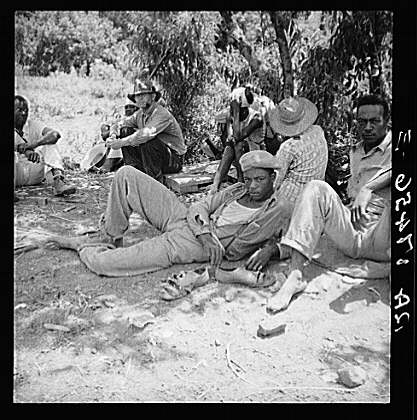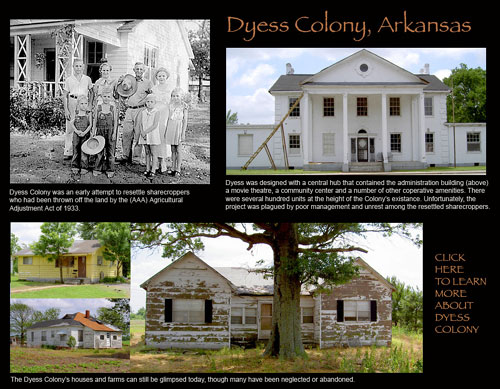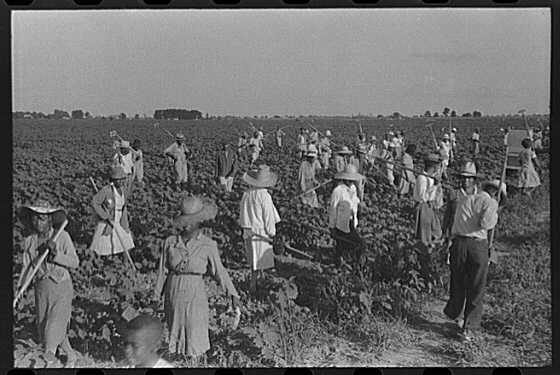| home | pg. 1 | pg. 2 | pg. 3 | pg. 4 | pg. 5 | pg. 6 | pg. 7 | pg. 8 | pg. 9 | pg. 10 | pg. 11 | Map of FSA Projects | Map of Transylvania | notes | Transylvania detail 1 | Transylvania detail 2 | Wolcott detail | Bibliography | D. Gorton Homepage | Jane Adams Homepage
|
|
by
Jane Adams
D. Gorton
Paper given at the Joint Meetings of the Agriculture, Food and Human Values Society and the Association for the Study of Food and Society, Boston University, June 7-11, 2006
| We had noted, as we went from county to county in the Mississippi, Louisiana and Arkansas delta surveying the Resettlement Administration and its successor Farm Security Administration’s farming cooperatives and other smaller projects, that the majority were settled by whites. Baldwin (1968:197) found that, by 1945, only 35 percent of tenant purchase borrowers in Mississippi were black. The figure was 27 percent in Louisiana and 16 percent in Arkansas – despite the fact that blacks were some 80 percent of farmers – largely sharecroppers and tenants – in the Mississippi Delta. |  Lunchtime for Cotton hoers. Dorothea Lange, Mississippi Delta.June 1937. LC-USF34- 017456-E Lunchtime for Cotton hoers. Dorothea Lange, Mississippi Delta.June 1937. LC-USF34- 017456-E |
| We found this surprising, since the projects were created by the most radical and, according to Jess Gilbert and Spencer Wood, “least racist” section of the agricultural New Deal, and since recent black history has celebrated some of the projects that went to blacks.[3] |  Dyess Colony. Contemporary photos and montage by D. Gorton.Dyess Colony, contemporary photos and montge by D. Gorton. |
|
Why, then, did whites benefit disproportionately? Probably the most important factor was that Southern blacks could not vote. Having been legally disfranchised by the end of the 19th and early 20th century they counted nothing to the politicians who nominally represented them (Perman 2001).[4] Further, as we argue elsewhere (Adams and Gorton 2006)[5], Southern planters viewed blacks as largely fitted, due to their race, for agricultural labor and other physically demanding jobs. In contrast, they viewed whites as “naturally” part of the managerial or yeoman classes. They also preferred black laborers over white as sharecroppers and day laborers, viewing whites as largely unfit for physcially demanding jobs or sharecropping since they were "difficult" to manage. |

Hopson Plantation, near Clarksdale, Mississippi Delta, Mississippi. Marion Post Wolcott, Aug ?, 1940. LC-USF33- 030948-M4
|
|
home | pg. 1 | pg. 2 | pg. 3 | pg. 4 | pg. 5 | pg. 6 | pg. 7 | pg. 8 | pg. 9 | pg. 10 | pg. 11 | notes | Map of FSA Projects | Transylvania detail 1 | Transylvania detail 2 | Wolcott detail | Bibliography |
|